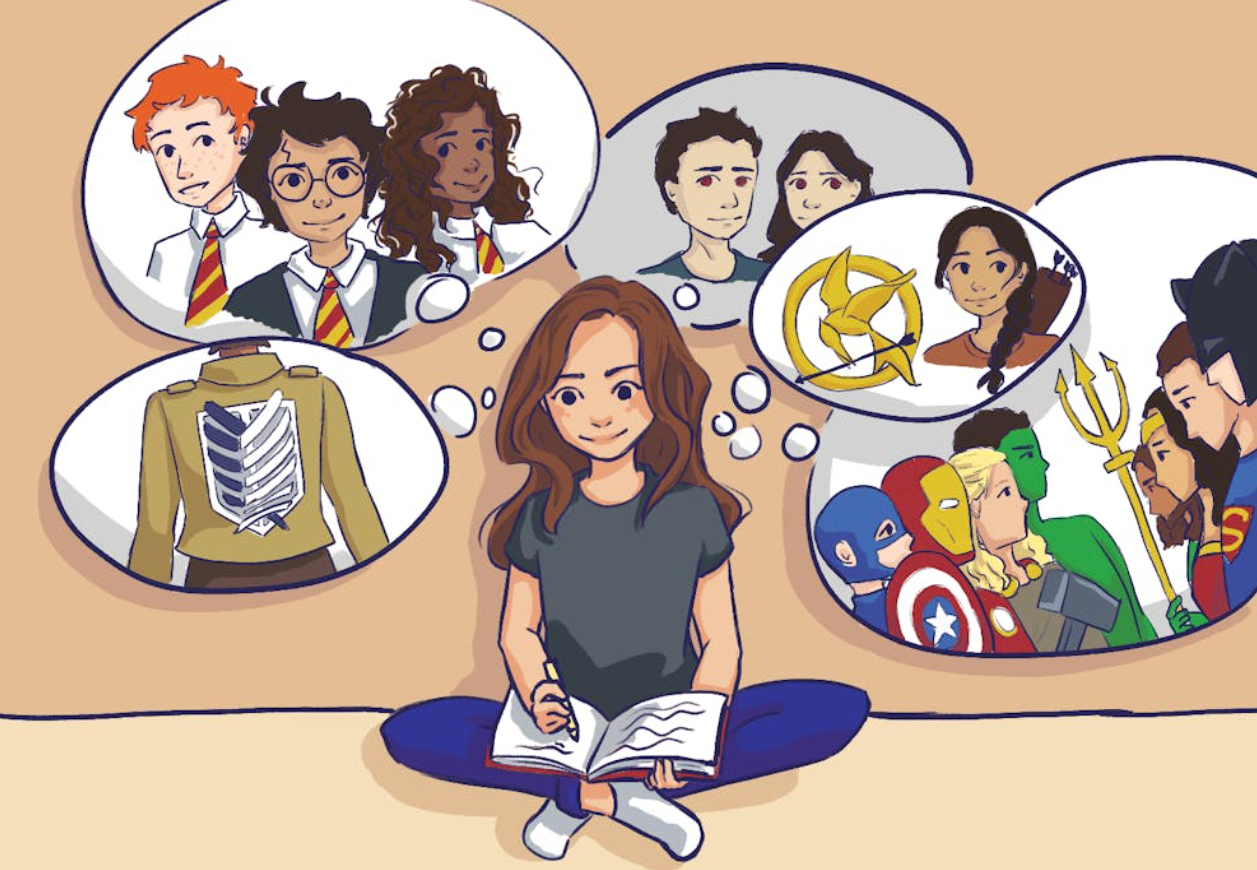Dismissing women’s art as fan fiction undermines its value because it perpetuates the harmful stereotype that women’s creative work is somehow less legitimate or important than that of men. By labeling women’s art as fan fiction, it belittles the time, effort, and talent that women put into their work. It also reinforces the idea that women’s stories and perspectives are not as valuable or worthy of recognition as those of men.
This dismissive attitude towards women’s art can have a negative impact on the self-esteem and confidence of female artists, leading them to question the validity of their own work. Additionally, by marginalizing women’s art as fan fiction, it restricts the diversity of voices and experiences that are represented in the creative world. Women’s art should be celebrated and respected for its unique and valuable contributions to the cultural landscape, rather than being unfairly dismissed as derivative or unoriginal.
It is important to recognize and appreciate the creative talents and perspectives of women artists, and to support their work in order to promote a more inclusive and equitable artistic community. By valuing and respecting women’s art, we can create a more diverse and vibrant creative environment that benefits everyone.

The Impact of Gender Bias on Artistic Recognition
Gender bias has long been a pervasive issue in the art world, affecting the recognition and success of female artists. Despite the immense talent and creativity displayed by women in the arts, they often face an uphill battle in gaining recognition for their work. This bias can manifest in various ways, from the underrepresentation of women in prestigious galleries and museums to the undervaluing of their artwork compared to that of their male counterparts.
The impact of gender bias on artistic recognition is far-reaching, as it not only hinders the career advancement of female artists but also perpetuates a narrative that devalues their contributions to the art world. This can have a detrimental effect on the overall diversity and richness of artistic expression, as talented female artists are often overlooked or marginalized in favor of their male peers.
In order to combat this bias and create a more inclusive and equitable art world, it is crucial for institutions and individuals to actively challenge and dismantle the systemic barriers that perpetuate gender inequality in the arts. By championing the work of female artists and providing them with the same opportunities and recognition as their male counterparts, we can begin to create a more diverse and representative art world that celebrates the talent and creativity of all artists, regardless of gender.
Understanding Fan Fiction: A Genre and Its Misconceptions
Fan fiction is a genre of creative writing that involves fans of a particular work of fiction creating their own stories based on the characters and world of that work. While some may view fan fiction as simply a form of plagiarism or a waste of time, it is actually a vibrant and dynamic genre that allows fans to explore their favorite stories in new and exciting ways. By writing fan fiction, fans are able to delve deeper into the characters and relationships that they love, and to imagine different scenarios and outcomes for their favorite stories. In this way, fan fiction can be a form of homage to the original work, as fans show their appreciation for the characters and world created by the original author by continuing to engage with them in their own stories.
One common misconception about fan fiction is that it is all poorly written and lacks originality. While it is true that there is a wide range of quality in fan fiction, from amateurish and derivative to highly skilled and innovative, it is unfair to dismiss the entire genre based on the perceived shortcomings of some works. Many fan fiction writers are talented and dedicated storytellers who put a great deal of effort and creativity into their work. Additionally, fan fiction can be a valuable space for writers to experiment with different styles and genres, and to receive feedback and support from a community of like-minded fans.
Another misconception about fan fiction is that it is somehow disrespectful to the original author or work. In reality, most fan fiction writers are fans themselves who have a deep love and respect for the original work, and who see fan fiction as a way to engage with and celebrate that work in their own way. While it is true that some authors may not appreciate fan fiction based on their work for various reasons, many authors are supportive of fan fiction and even encourage their fans to engage with their work in this way. Ultimately, fan fiction is a genre that allows fans to express their creativity, passion, and love for their favorite stories, and to connect with other fans who share their enthusiasm.

How Women’s Art Is Reduced to Stereotypes
Women’s art is often reduced to stereotypes in society, limiting the potential impact and recognition of female artists. These stereotypes can include assumptions about the subject matter, style, and quality of women’s art. For example, women artists are often expected to create work that is emotional, domestic, or focused on traditionally feminine topics such as motherhood or relationships.
This pigeonholing diminishes the diversity and complexity of women’s artistic voices and reinforces outdated gender norms. Additionally, women artists may be judged more harshly or dismissed based on their gender, with their work seen as less serious or important than that of male artists. This devaluation of women’s art contributes to a lack of representation in galleries, museums, and art history books, further perpetuating the marginalization of female artists.
In order to combat these stereotypes and promote gender equality in the art world, it is essential to challenge preconceived notions of what women’s art should look like and to support and celebrate the full range of artistic expression by women. By recognizing and valuing the unique perspectives and talents of female artists, we can create a more inclusive and equitable art world that reflects the diverse experiences and voices of all artists.
The Consequences of Dismissing Female Creators
Dismissal of female creators has deep and lasting consequences that can hinder progress and perpetuate inequality in various industries. When female creators are not given the recognition and support they deserve, their talents and contributions go unnoticed and unappreciated. This can lead to a lack of diversity in creative works, limiting the range of perspectives and ideas that are shared with the world.
Additionally, dismissing female creators reinforces harmful stereotypes and biases that suggest women are less capable or talented than their male counterparts. This can have a negative impact on the self-esteem and confidence of female creators, making it harder for them to pursue their creative passions and reach their full potential. Furthermore, dismissing female creators can result in missed opportunities for collaboration and innovation, as diverse perspectives and experiences are essential for driving creativity and pushing boundaries.
Ultimately, dismissing female creators not only stifles their individual growth and success, but also deprives society as a whole of the unique and valuable contributions they have to offer. It is essential to recognize and uplift female creators in order to create a more inclusive and equitable creative landscape that benefits everyone.

Reclaiming Authenticity: Valuing Women’s Artistic Contributions
In a society where women’s voices have historically been silenced and their artistic contributions undervalued, there is a growing movement towards reclaiming authenticity and recognizing the unique perspectives and talents of female artists. Women have long been at the forefront of artistic innovation and creativity, yet their work has often been overshadowed or dismissed in favor of male-dominated narratives. By valuing and celebrating women’s artistic contributions, we are not only acknowledging the richness and diversity of human experience, but also challenging the traditional power structures that have marginalized women for centuries. Through the exploration of women’s art, we are able to uncover hidden histories, amplify marginalized voices, and inspire future generations of artists to break free from the constraints of gender norms and expectations.
Reclaiming authenticity in women’s art means acknowledging the unique challenges and obstacles that women face in the art world, and actively working to dismantle these barriers. It means creating spaces and opportunities for women to share their stories, showcase their talents, and connect with other like-minded artists. It means challenging the notion that art created by women is somehow less valuable or important than art created by men. By reclaiming authenticity in women’s art, we are not only empowering individual artists to embrace their true selves and express their creativity without fear of judgment or censorship, but also reshaping the cultural landscape to reflect a more inclusive and diverse range of voices and perspectives.
Ultimately, valuing women’s artistic contributions is not just about recognizing the talents and achievements of individual artists, but about creating a more equitable and just society where all voices are heard and all stories are valued. By reclaiming authenticity in women’s art, we are taking a crucial step towards building a more inclusive and diverse cultural landscape that reflects the true richness and complexity of human experience.
